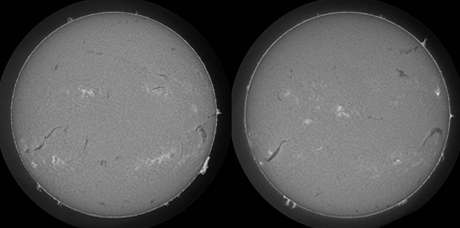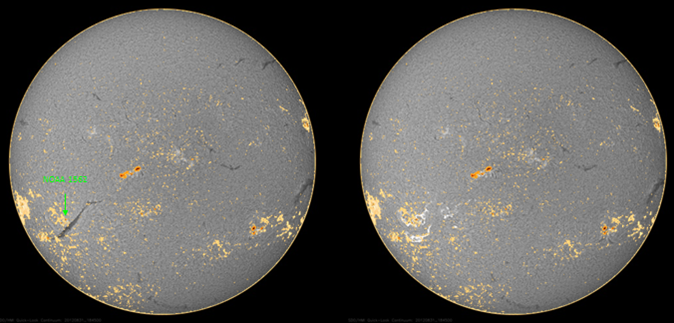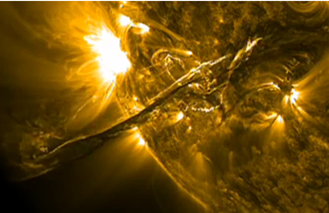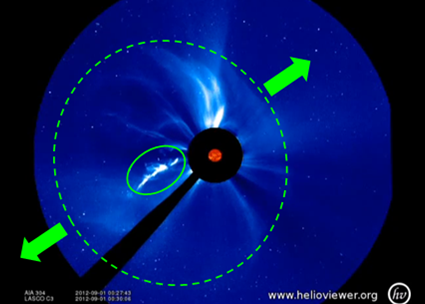In one of the previous STCE Newsletters, a long-living and quite dynamic solar filament was discussed.
This filament was visible on the solar disk during the first two weeks of August, losing only a small part of its structure despite various eruptions. On August 14, it started its backside transit, reappearing again from behind the southeastern solar limb two weeks later. As can be seen from the GONG-images taken on 4 and 31 August, the remaining part of the filament still seemed quite solid and ready for an encore performance.

However, the magnetic fields supporting this filament were not stable anymore. Finally, during the evening hours of August 31, they forced the filament into an impressive and final eruption. A movie of this event can be seen here. It consists of 5 parts.
First comes an H-alpha clip (chromosphere) from the Big Bear Observatory (GONG), showing that the filament eruption, which may have been caused by magnetic interaction with nearby, but small active region NOAA 1562, was followed by a relatively small flare. As one can see in the picture underneath (SDO-overlay on 2 GONG-images), this flare consisted of two rather large, bright, parallel regions along the inversion line where the filament used to be. Such a flare (a two-ribbon flare that is the result of a filament eruption outside sunspot groups) is usually called a Hyder-flare, after the scientist who first studied this kind of events.

The next two parts show the eruption at increasingly hotter temperatures. SDO/AIA 304 images the event in the transition region in temperatures around 50.000 degrees. Note the movement of the dark "cloud" over the erupting area after the flare, which is "cold" material trapped in the magnetic cage of the solar atmosphere. PROBA2/SWAP shows the eruption in the hot corona (about 1 million degrees). Note the ejected material and post-flare coronal loops ("arcade").
The SDO/AIA 171 clip zooms in on the eruption and provides a detailed view of this spectacular eruption and the blast region (hot corona; around 650.000 degrees).

The final part consists of a combination of SDO/AIA 304 and SOHO/LASCO C3 imagery showing an expanding halo coronal mass ejection (dashed green ellipse in image underneath) of which the right part is directed towards Earth. The core of the erupted filament, indicated by a solid green ellipse, was directed away.

A glancing blow of this relatively slow moving particle cloud (+/- 520 km/s) struck Earth on Monday September 3, at noon, sparking a minor geomagnetic storm. Aurorae were visible in Scandinavia, Scotland, Canada and Alaska.
 |
 |





